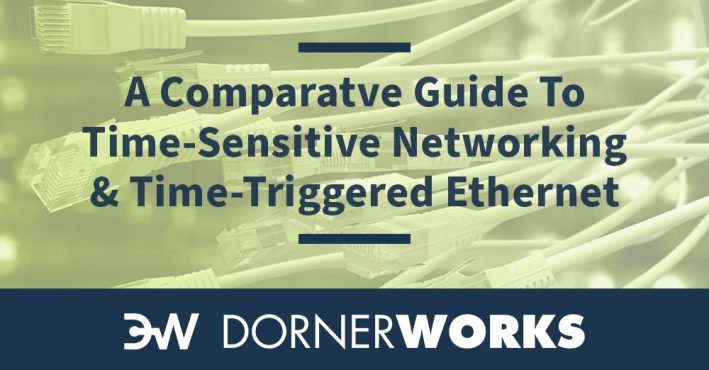
Imagine this scenario: You are in charge of a critical mission, and communication failures are not an option. In such high-stakes situations, choosing the right ethernet networking standard can mean the difference between success and failure.
Two popular options are Time-Sensitive Networking (TSN) and Time-Triggered Ethernet (TTE). While both prevent congestion loss and add determinism to bandwidth and latency of COTS Ethernet, they have distinct differences that can make one preferable to the other.
Do you know which option to choose?

You will have a better idea of the answer after reading on. Let’s explore the pros and cons of TSN and TTE, and why TSN may be the better choice for certain industries and applications.
Time-Sensitive Networking (TSN; IEEE 802.1Qbv and others) and Time-Triggered Ethernet (TTE; SAE AS6802) are both standards that add deterministic bandwidth and latency to COTS Ethernet. Although they are similar, they each have distinct differences.
Both standards support heterogenous traffic including time-schedule traffic along with bandwidth partitioning and legacy best-effort traffic. TSN time-aware shaper can be combined with the AVB credit-shaper (IEEE 802.1Qav) or strict priority scheduling within a given time slice (i.e. gate). TTE can support ARINC664p7 (AFDX™) and best-effort traffic on the same schedule but there is a single fixed ratio that determines the percent of schedule available to TTE. This may result in inefficient use of bandwidth.
TSN time-schedules queues of traffic whereas TTE time-schedules individual frames/messages. In TSN, the preferred approach is for the sender to create queues of frames that all have the same transmission period and are sent during the same scheduled period. TSN can schedule multiple QoSes during the same time period with prioritization or credit-shaping. This allows lower-priority traffic to make use of any remaining bandwidth. TTE has no prioritization and blocks all other traffic even when there are no time-scheduled frames to transmit results in efficient use of bandwidth.
TSN supports the AVB Credit Shaper (IEEE 802.1Qav) whereas TTE support ARINC664p7 for bandwidth partitioning. Both use similar approaches to limit bandwidth of queues based on configuration. ARINC664p7 is designed with built-in triple redundancy whereas this is an optional add-on standard to TSN (IEEE 802.1CB).
TSN and TTE both require time-synchronization. TSN uses the IEEE 802.1AS which a profile of IEEE1588 which is ubiquitous and has existed for over 20 years. IEEE 802.1AS synchronizes each network node to a grandmaster’s EPOCH (“wall-clock”) time. A TTE network consists of multiple synchronization masters that send out a relative time and a “compression master” that averages those times into a single relative time that is used by all nodes to schedule traffic. While this approach creates a form of fault tolerance, it may be vulnerable to rogue or faulty synchronization masters. TSN approach of synchronizing wall-clock time is more conducive to data fusion, larger multi-domain networks, or more sophisticated applications that require synchronized wall-clock time. IEEE 802.1AS used by TSN also has a new standard, P802.1AS-dm, that provides hot-standby, thereby fault tolerance support.
TSN is codified entirely in IEEE standards which tend to be more “open” than the SAE AS6802 standard used by TTE. SAE AS6802 is a one-size-fits-all standard regardless of industry. On the other hand, TSN is a collection IEEE standards and features that can be selected based on use-case. Nonetheless, IEEE has also created “profiles” of TSN that determine which standards and features are required for a given industry, such as the Aerospace Profile (IEEE P802.1DP) or Automotive profile (IEEE P802.1DG).
When it comes to choosing between TSN and TTE, it’s important to carefully consider the unique needs of your industry and application. While both standards add deterministic bandwidth and latency to COTS Ethernet, they have distinct differences in terms of heterogenous traffic support, time-schedule traffic, bandwidth partitioning, time-synchronization, and open standards and profiles. If you’re unsure which option is best for you, don’t hesitate to reach out to experts like DornerWorks to help you make an informed decision.
Ensure success in your critical missions. Schedule a meeting with our team today and turn your networked product ideas into reality.